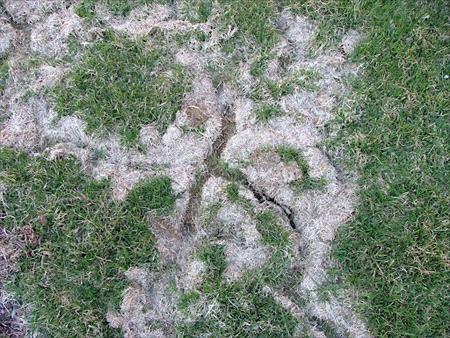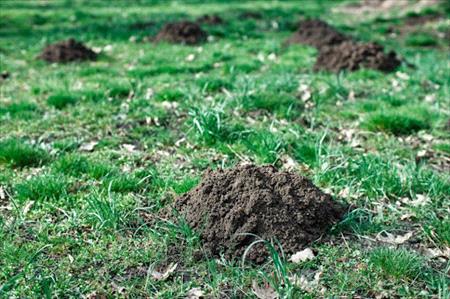Your Cart

Learn Your Lawn: Moles
Request a Quote
WHAT ARE MOLES?
The adult mole is a small, burrowing mammal, commonly found in lawns and gardens. It has dark gray or brown velvety fur and a cylindrical body that is 15 to 20 cm (5 to 8 inches) long. It has small eyes and broad front feet with strong claws that are well-adapted for digging in soil. Although moles can sometimes be a nuisance, they feed on insects, worms, and other small creatures found in the soil, which helps balance our ecosystem. Though lawn and plant damage is likely incidental and the blame can be shared by other small herbivores using the mole’s tunnels, the tunnels and mounds can cause damage to lawns and gardens.
Here is some information on the behavior of moles.
Moles create extensive networks of tunnels, though many individual tunnels are used only once.
Temporary surface tunnels are feeding tunnels that are used only a few times and then abandoned. You can identify them in areas where the sod is raised and appears to have ridges.
Deeper tunnels, from which the mole must displace dirt, forming molehills, are used mainly as the mole’s living quarters.
Moles do not hibernate, and they remain active during the day or night, all year long.
During the winter, the mole looks for food underground, deep below the frost line, so most activity above the surface happens in the spring and fall.
HOW CAN I CONTROL MOLES IN MY LAWN?
Damage from mole tunnels and mounds will generally occur in spring, as the moles stay underground during the winter months. In most cases, the damage is superficial and will heal once the lawn has been raked and fertilized. If the damage is severe, it would be wise to fill in those areas with a suitable grass seed variety for your region. Here are a few preventative measures that can be taken to deter mole damage from your lawn.
Fall Mowing: Mowing your lawn regularly in the fall can help prevent moles from taking up residence, as it makes it harder for the moles to find food. It is also recommended that you mow a little shorter during your last mow of the season.
Fill Tunnels and Holes: Fill in holes caused by moles to discourage them from making new burrows in your yard.
Install Mole Repellent Devices: Mole repellent devices use high-pitched noises or vibrations to scare moles away
Use Humane Traps: Humane mole traps are a safe and effective way to remove moles from your yard without causing harm to the animals. Make sure you release the mole far from your yard, in a
shady, wooded area where the mole can find new sources of food.
 English (USA)
English (USA) Français (CANADA)
Français (CANADA)

